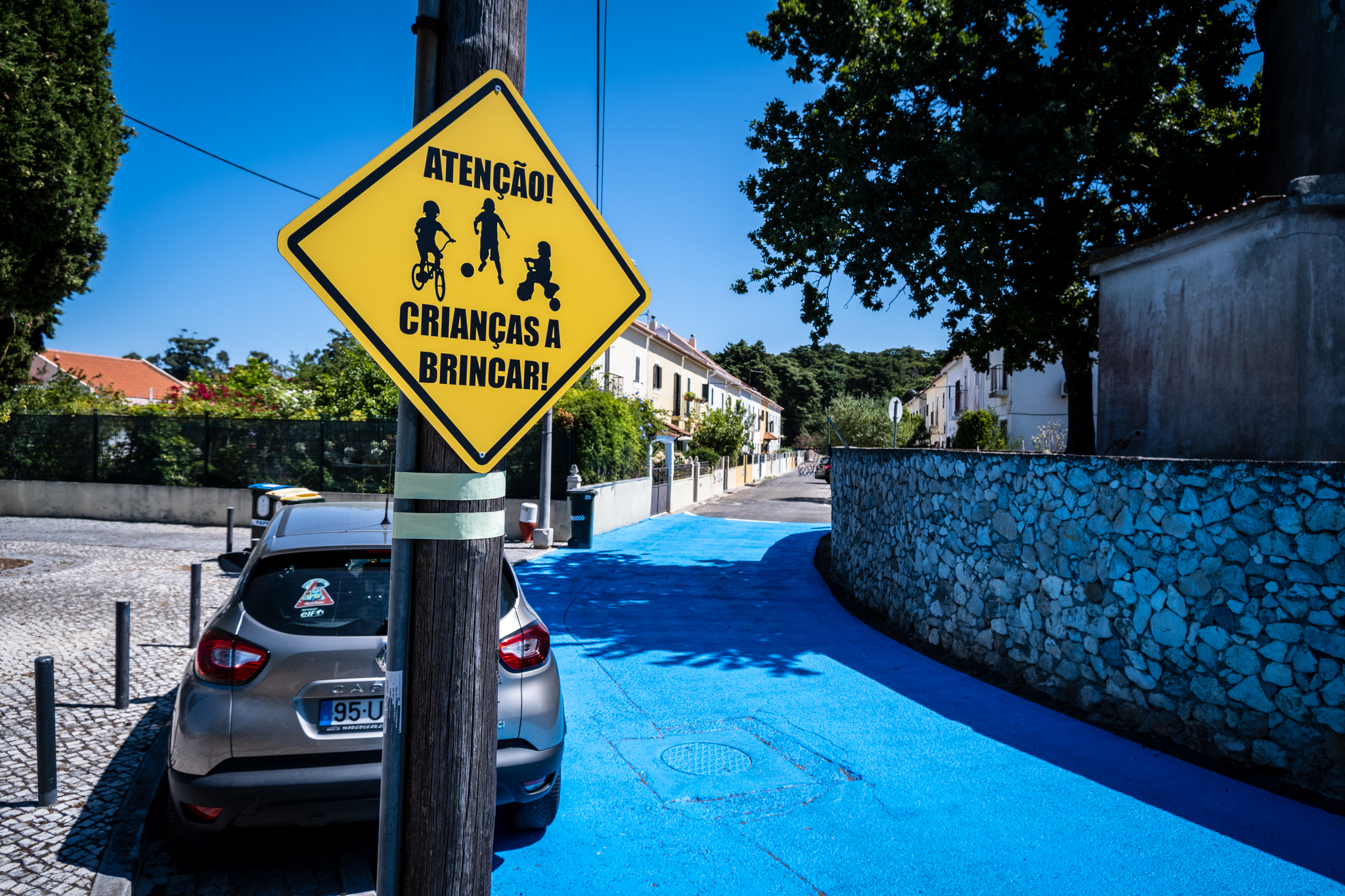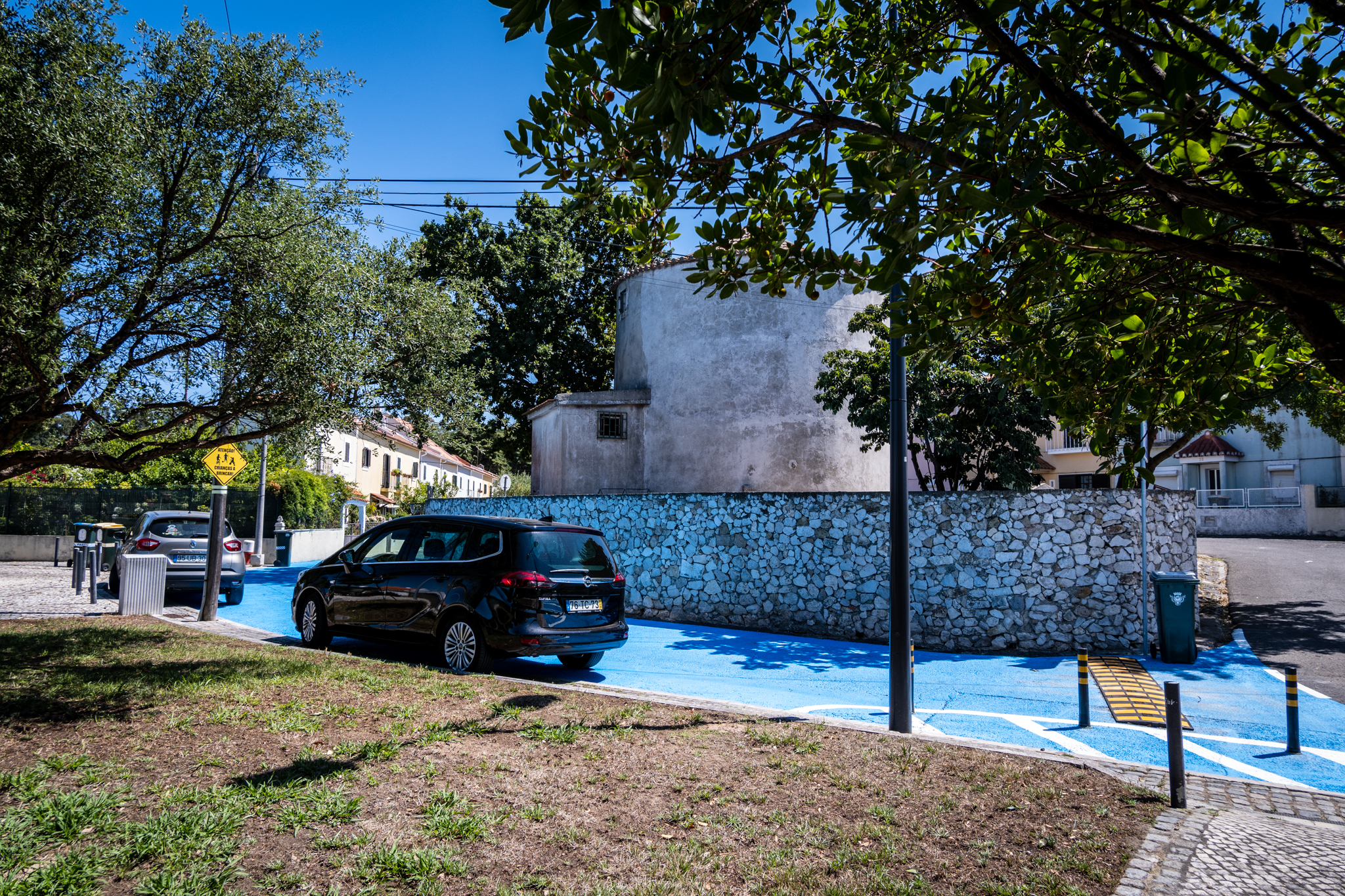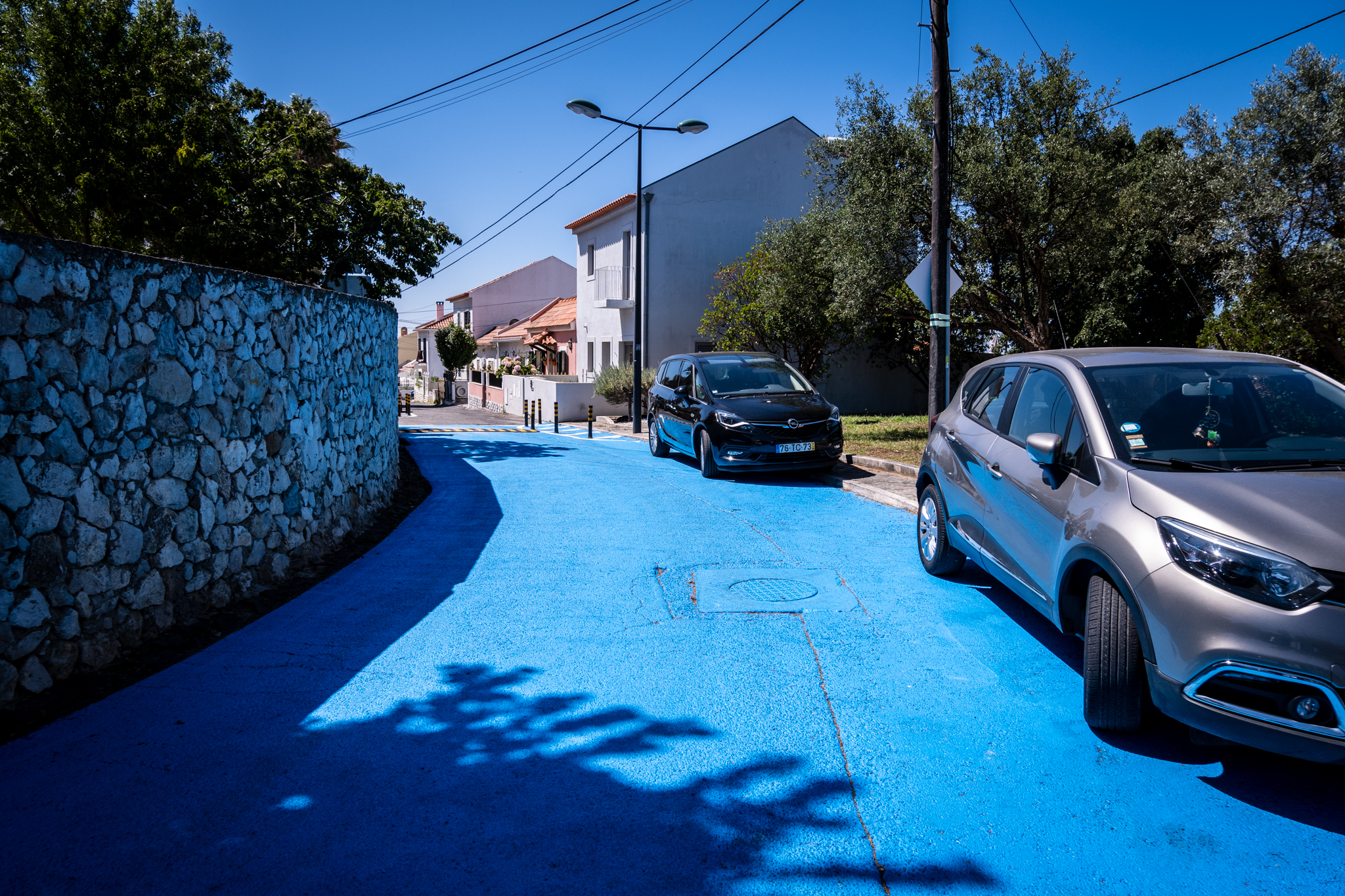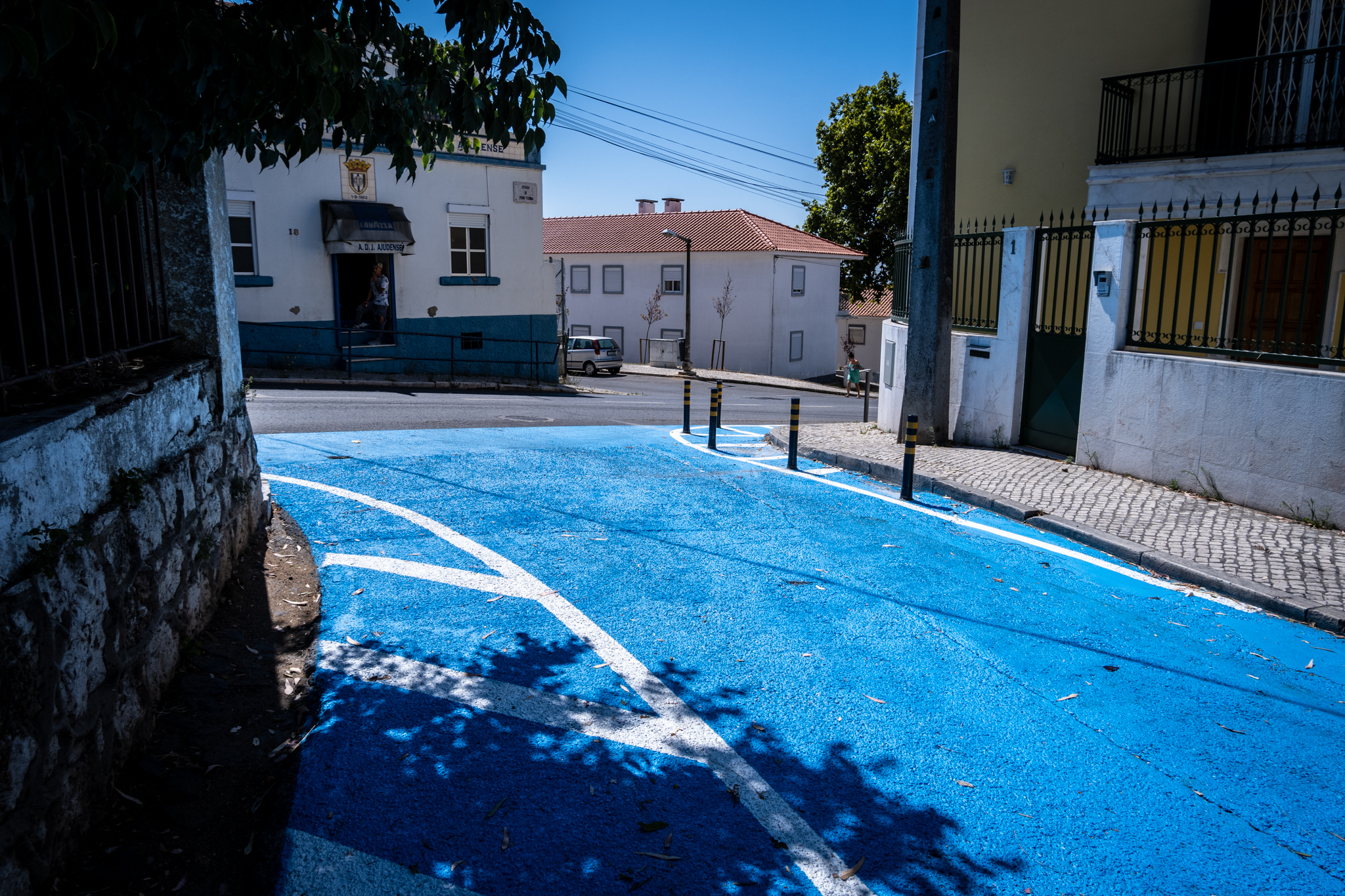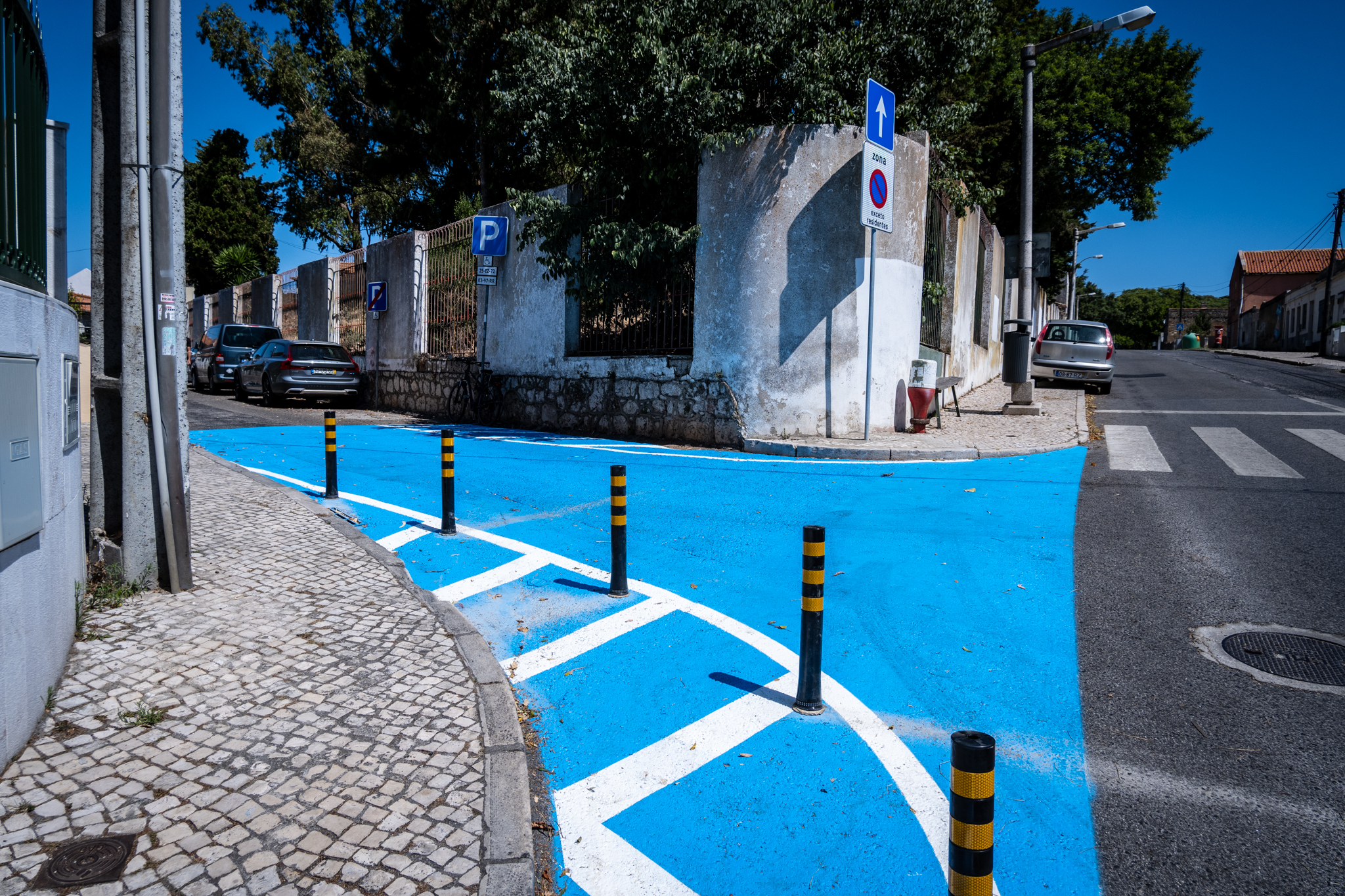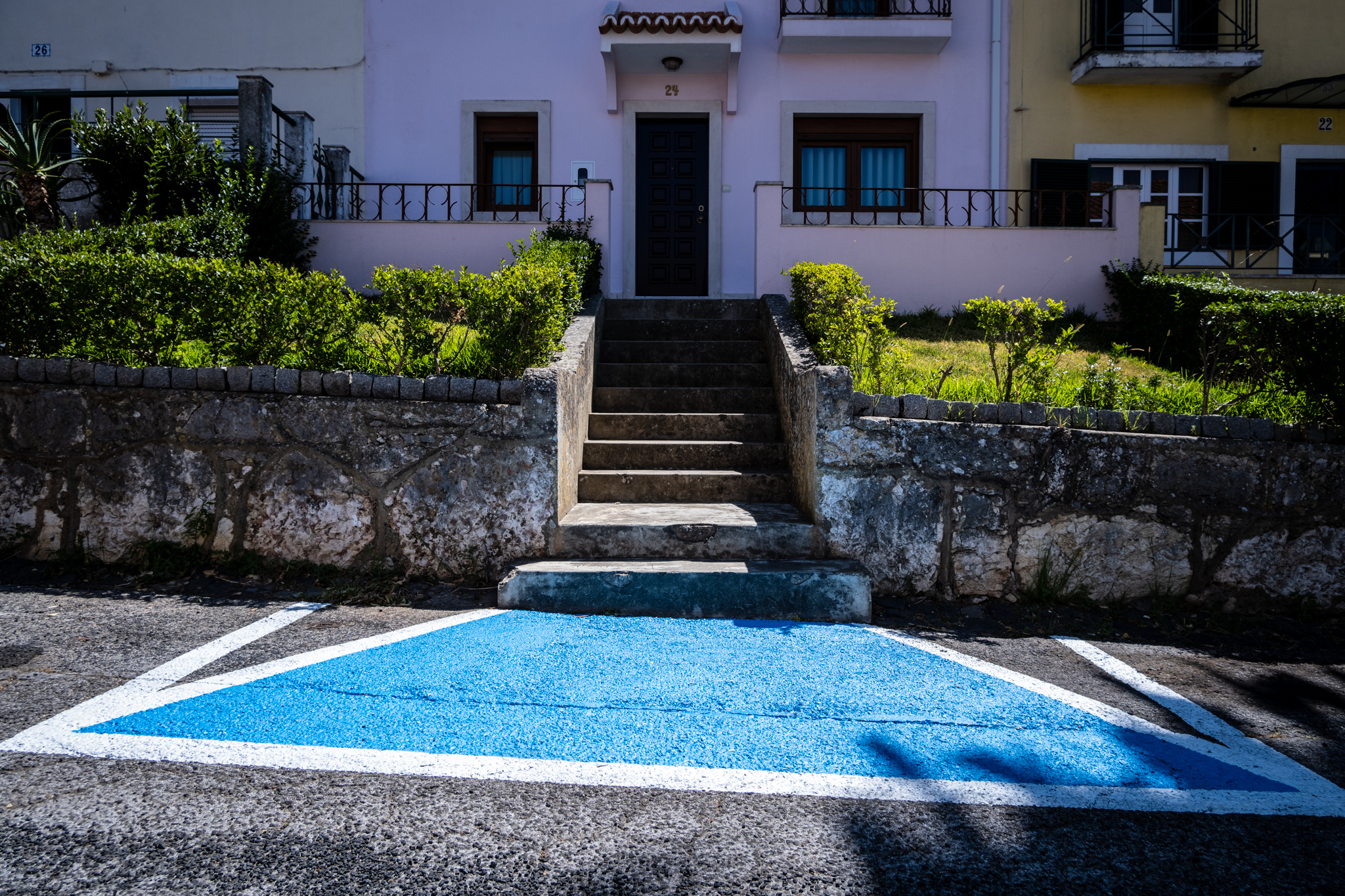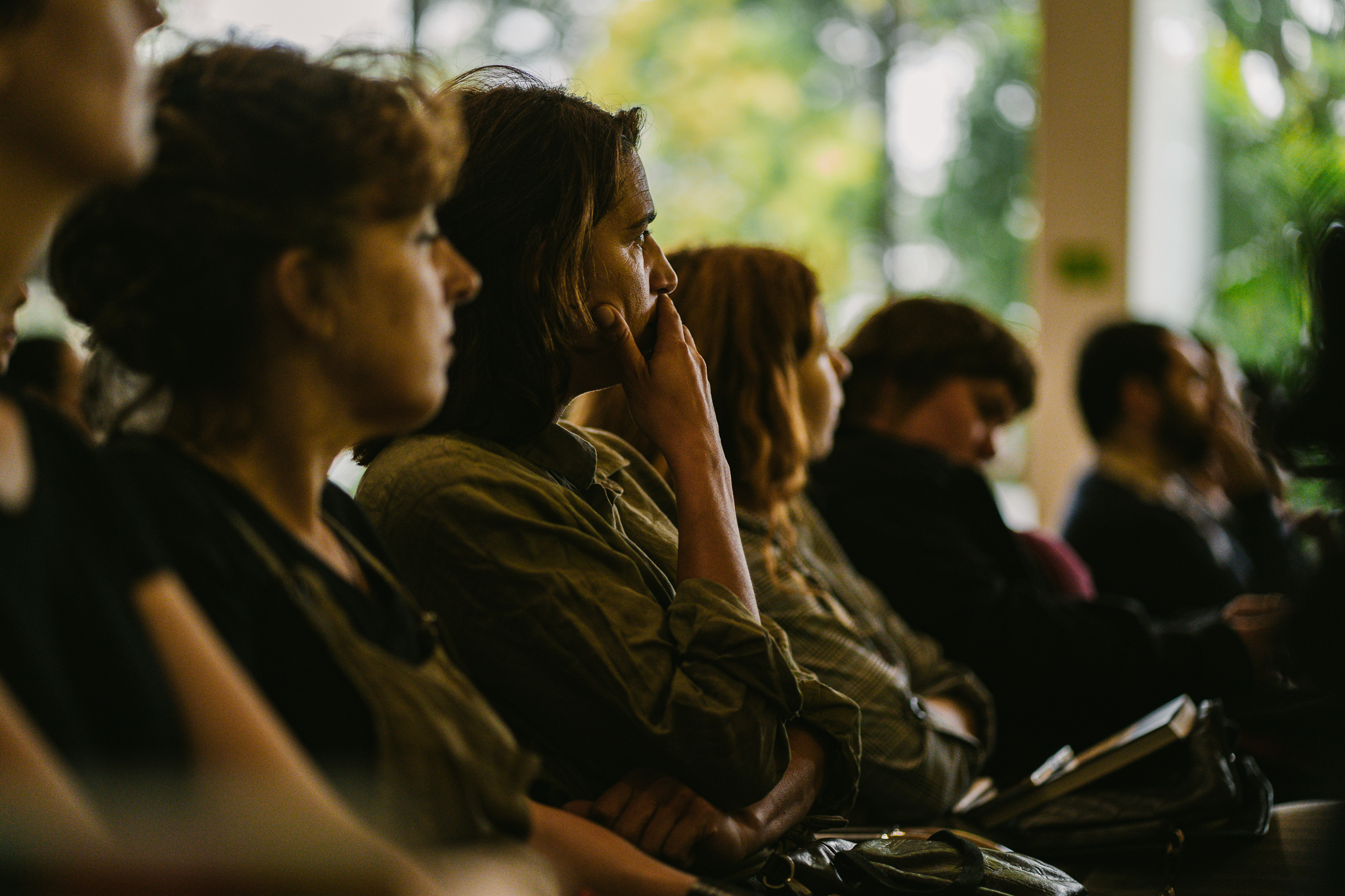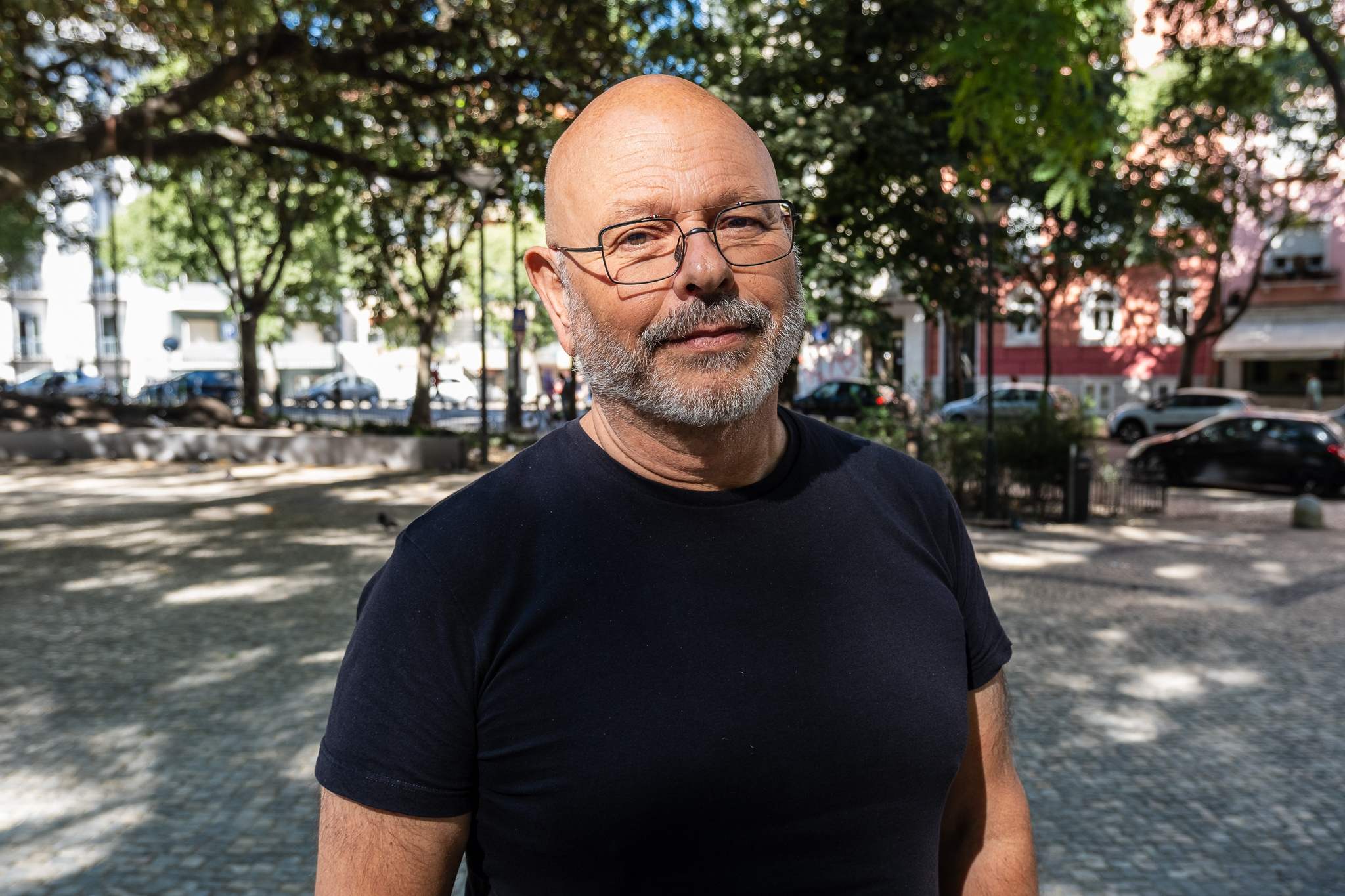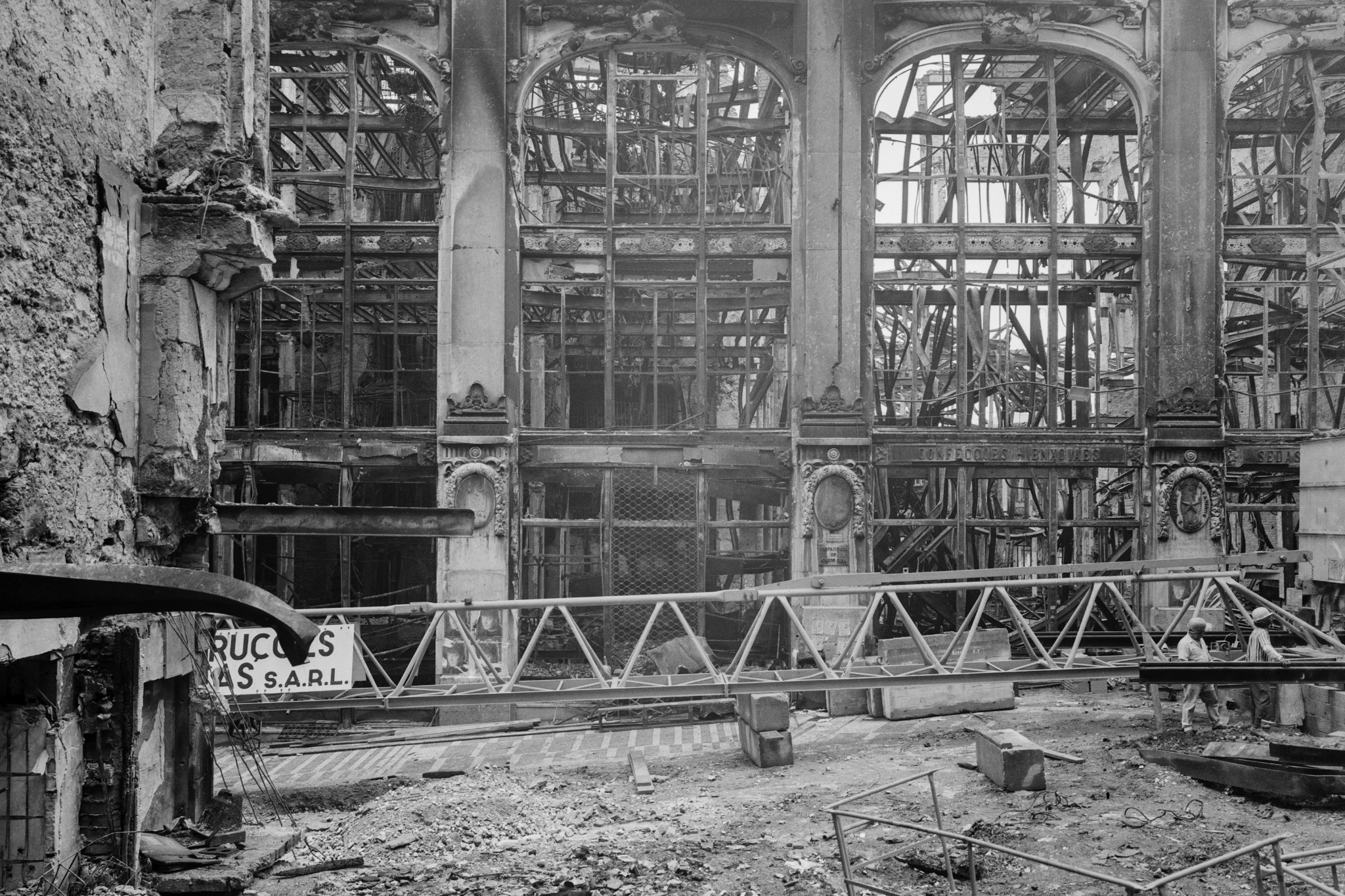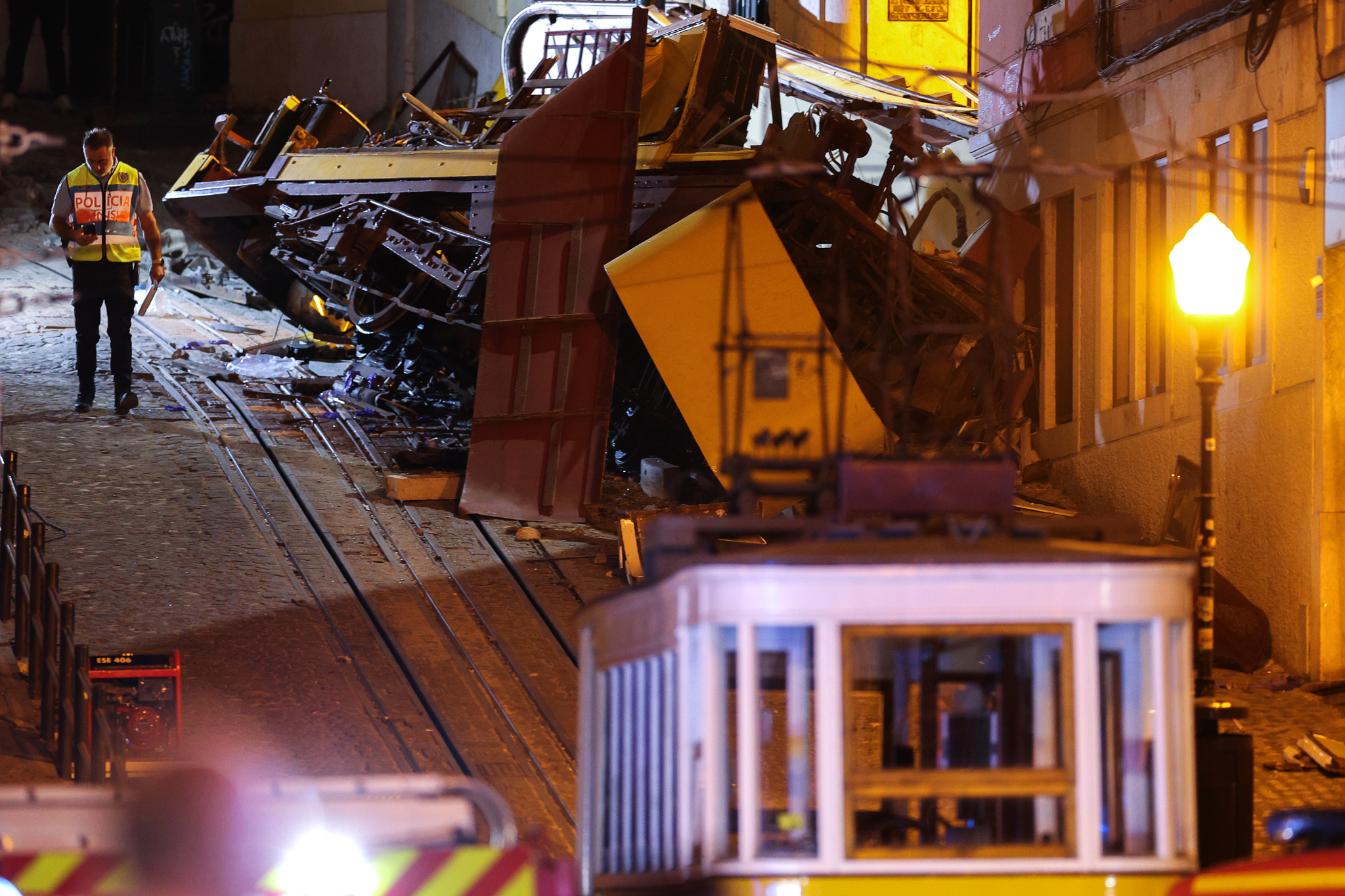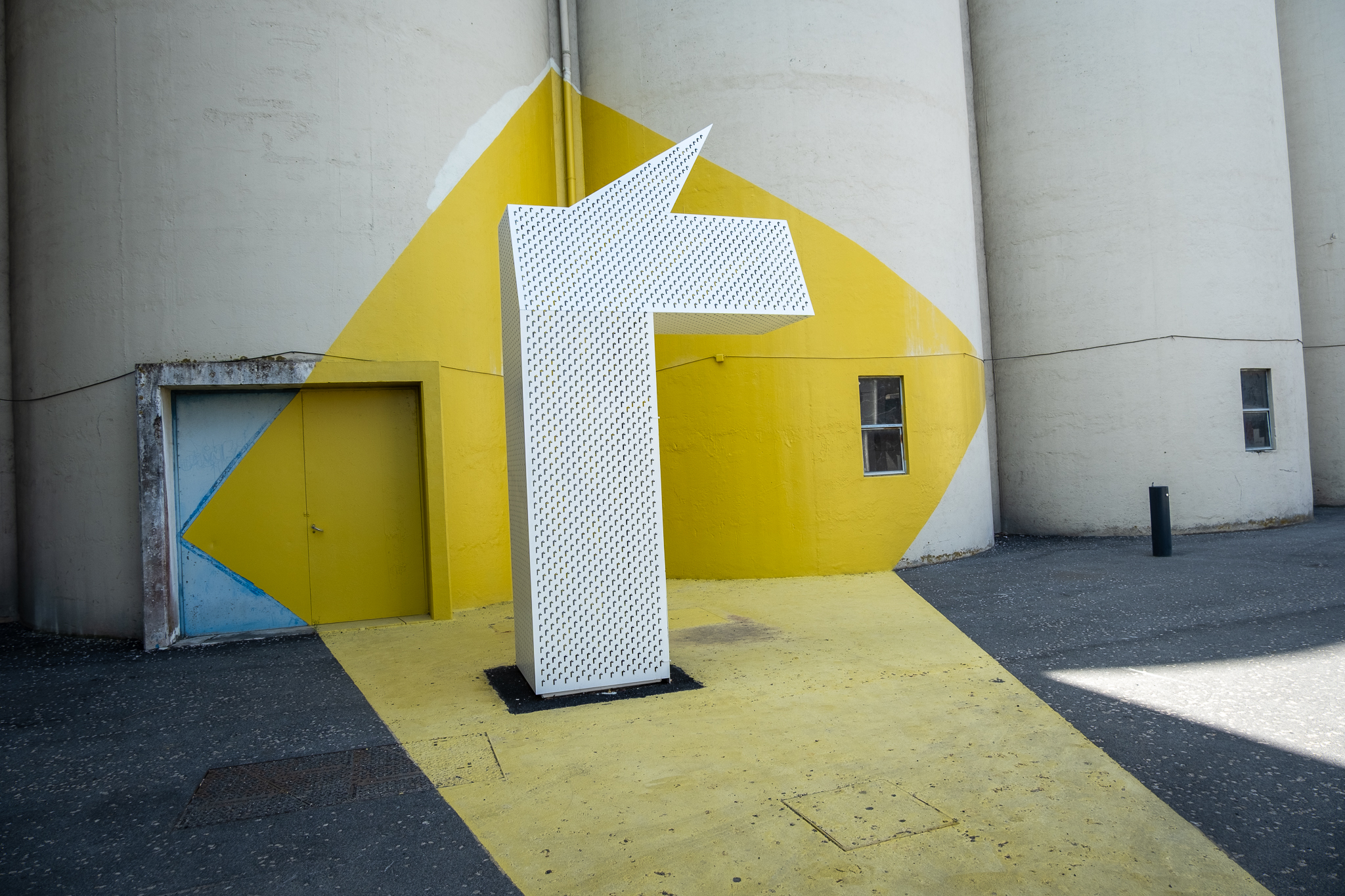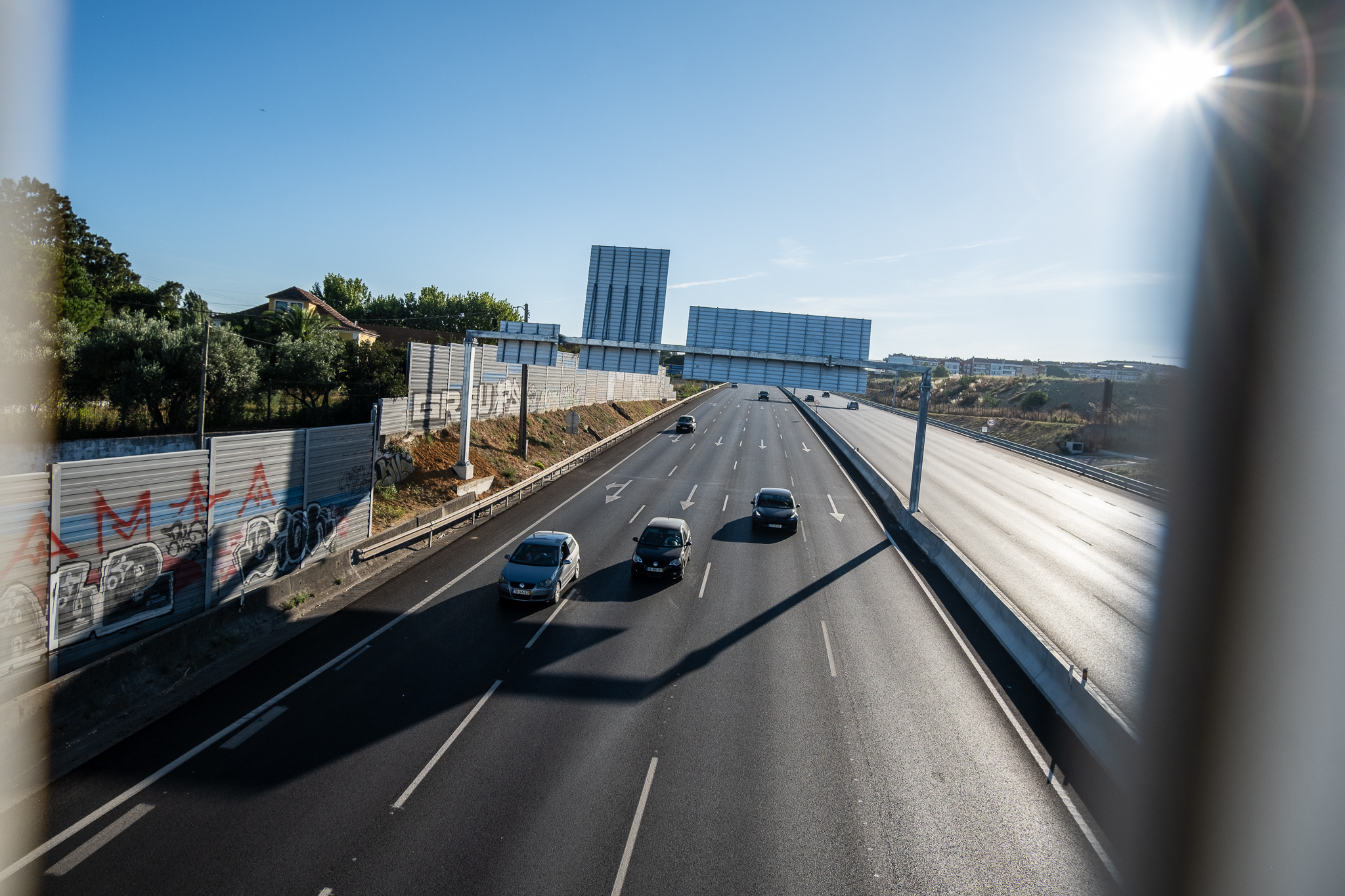
You don't have to go far back in Lisbon city archives to find records of children playing in the streets. But the automobile has, in recent decades, come to take over our public space, making it, in some cases, inhospitable enough that such memories of the past are no longer meaningful in the present. The streets became the cars', not the people's - and much less the children.
In Ajuda's Bairro do Caramão, the cosmopolitan city seems to be interrupted to give way to narrow streets without sidewalks, humble houses, and the typical atmosphere of a rural area. In this neighborhood, a section of Chaminés del Rei street was painted blue to calm traffic and sign a new coexistence zone, where pedestrians have priority over vehicles and where children can go out to play. The intervention was executed by Junta de Freguesia da Ajuda (JFA), at the request of the residents and in coordination with the Lisbon City Hall (CML), according to a source from JFA explained to Lisboa Para Pessoas.
This is an intervention pop-upThis is a low-cost, easily executed work, made with cheap materials such as paint and bollards. The goal was to respond to a problem signed by residents of the street, worried about the crossing traffic, i.e., people who, in their vehicles, used that street as a detour between Pedro Teixeira Road and Queluz Road and who, sometimes, applied excessive speeds, endangering the neighborhood residents.
The Junta de Freguesia da Ajuda asked CML's mobility division for a proposal for that artery and presented it to the population. The project was executed with no changes except for one - a speed bump was added at the request of the residents. The JFA paid for the intervention under the delegation of powers from the central authority to the parishes, and the work was completed in a few days at the end of July.
Chaminés del Rei Street has thus won, a zone of coexistence (with a bump) in the middle of its length, on a curve with poor visibility and from where cars could "shoot off", without their drivers noticing children or other people who might be on the street. That curve is also a leisure area - the only "gap" in the whole street where there is a small garden area, shade from some trees, a table for chatting or playing cards, and an old windmill. There is also a sign saying "Attention, children at play" and a basketball table.
The JFA refers that the intervention is only a "first phase" and that it will work on a more in-depth project for that section, with a view to giving the neighborhood a new living area. The idea is to take advantage of the existing square and the coexistence zone now created, and think of a way to connect all this with the millIt is now abandoned, but the council, as it has done with other mills in the parish, wants to re-qualify it.
Everything is currently open, from raising the sidewalk in the area that has now been painted blue to better mark the coexistence zone to closing that section entirely to vehicular traffic by having them go around the mill. This last option will be possible since Chaminés del Rei Street, when it meets the mill, splits in two, one going straight ahead (and is now the coexistence zone) and the other going around it, serving some residences. The JFA still has no answers, the only certainty being the will to dignify that mill and to create around it a quality public space for the resident community.
In addition to the coexistence zone (where some drivers still insist on parking their cars), Chaminés del Rei Street received other blue markings: one at the entrance, to signal to drivers and other passers-by that it is a different street (bollards were also placed to reduce the radius of curvature), and next to the staircases to access residences, to signal that they should be unobstructed.
Neighborhoods can be calm and quiet places. By eliminating through-traffic, slowing speeds (lowering the limit to 30 km/h), and reducing traffic to essentials (the needs of residents and merchants), it is possible to have streets alive again, where people, bicycles, children, and even motorized vehicles can live together safely. The streets can once again become spaces for recreation, laughter, and play - especially in neighborhoods more isolated from the hustle and bustle of the city, such as this Bairro do Caramão, in Ajuda.
